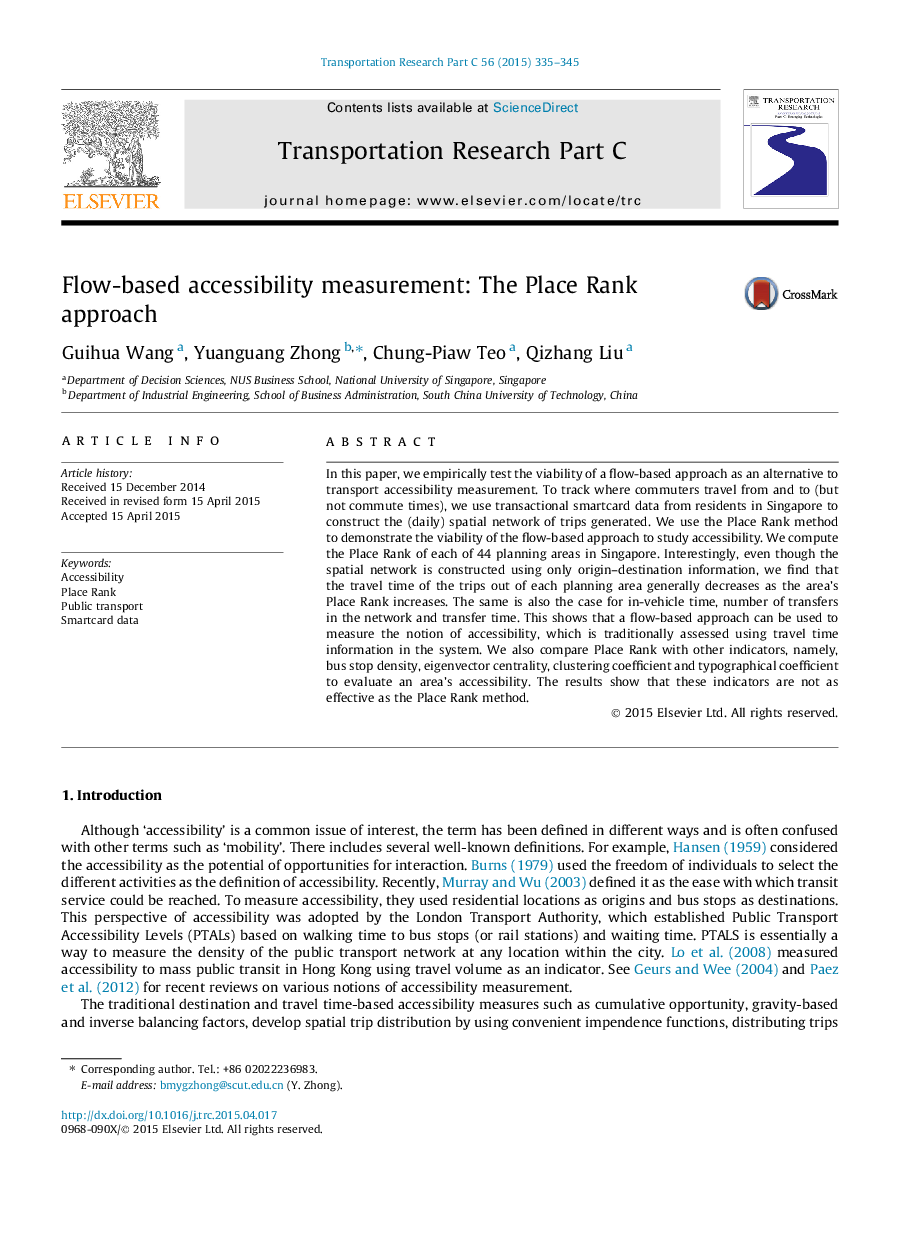| Article ID | Journal | Published Year | Pages | File Type |
|---|---|---|---|---|
| 6936789 | Transportation Research Part C: Emerging Technologies | 2015 | 11 Pages |
Abstract
In this paper, we empirically test the viability of a flow-based approach as an alternative to transport accessibility measurement. To track where commuters travel from and to (but not commute times), we use transactional smartcard data from residents in Singapore to construct the (daily) spatial network of trips generated. We use the Place Rank method to demonstrate the viability of the flow-based approach to study accessibility. We compute the Place Rank of each of 44 planning areas in Singapore. Interestingly, even though the spatial network is constructed using only origin-destination information, we find that the travel time of the trips out of each planning area generally decreases as the area's Place Rank increases. The same is also the case for in-vehicle time, number of transfers in the network and transfer time. This shows that a flow-based approach can be used to measure the notion of accessibility, which is traditionally assessed using travel time information in the system. We also compare Place Rank with other indicators, namely, bus stop density, eigenvector centrality, clustering coefficient and typographical coefficient to evaluate an area's accessibility. The results show that these indicators are not as effective as the Place Rank method.
Related Topics
Physical Sciences and Engineering
Computer Science
Computer Science Applications
Authors
Guihua Wang, Yuanguang Zhong, Chung-Piaw Teo, Qizhang Liu,
